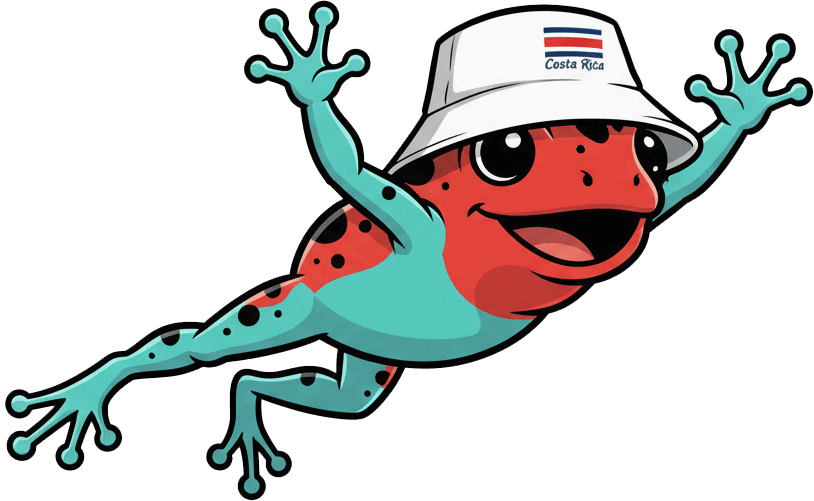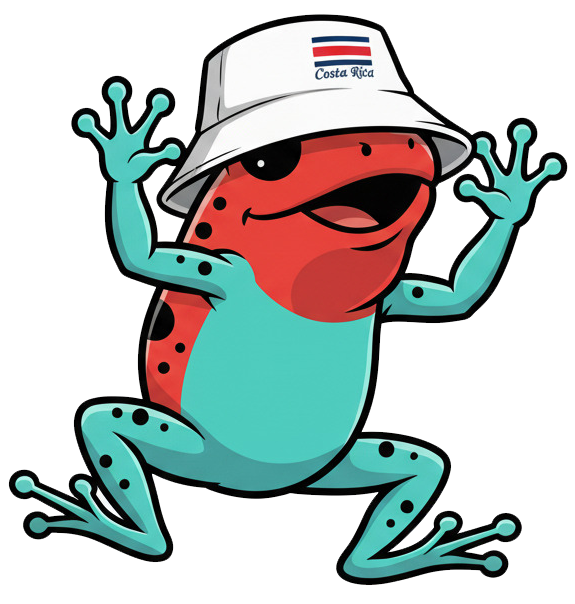When people think of Costa Rica, they often picture lush rainforests, pristine beaches, and abundant wildlife. But beyond nature, this country also has a rich cultural heartbeat — one that comes alive through its Traditional dances. Colorful costumes, lively marimba music, and centuries-old traditions make Costa Rica’s dances an unforgettable way to experience the nation’s identity.
Whether you’re strolling through a village fiesta, attending a national festival, or visiting San José’s theaters, these performances invite you to feel the rhythm of “pura vida.”
Key Takeaways: Costa Rica’s Traditional Dances at a Glance
- Most iconic dance: Punto Guanacasteco, the national dance, performed with marimba and vibrant courtship steps.
- Oldest ritual dance: Danza de los Diablitos by the Boruca people, performed Dec 30–Jan 2 each year.
- Where to see them: Local patron-saint festivals, Independence Day parades (Sept 15), Guanacaste’s Annexation Festival (July 25), or cultural centers in San José.
- Main instruments: Marimba, guitar, ocarina, violins, and cimarrona street bands (brass + drums).
- Costumes: Colorful layered skirts for women, white outfits with red scarves for men, elaborate Boruca devil masks for indigenous rituals.
What Makes Costa Rica’s Traditional Dances Unique?
Costa Rica’s folk dances are more than entertainment — they are living stories of the country’s history. Each style blends indigenous heritage, Spanish colonial influence, and African rhythms introduced during the colonial era.
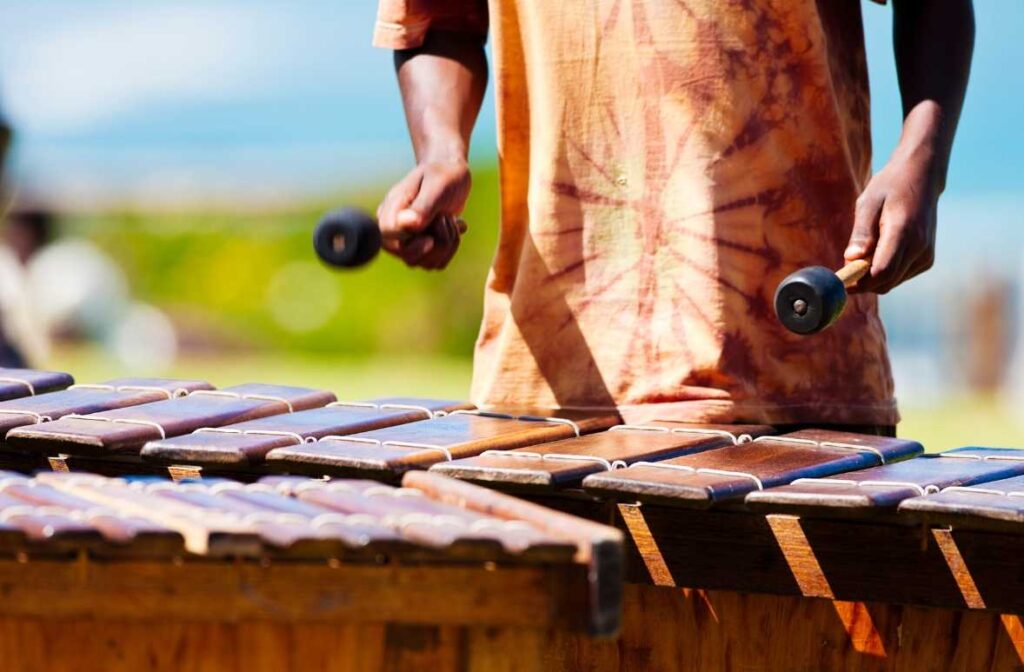
The marimba, Costa Rica’s national instrument and a UNESCO-recognized tradition, lies at the center of many dances. Its cheerful wooden tones are instantly associated with Guanacaste festivals. Costumes also carry symbolism: men’s white cotton outfits reflect the working life of campesinos (farmers), while women’s skirts explode in bright ribbons and layers, representing joy and abundance.
Unlike staged ballets, Costa Rican folk dances are community celebrations. Locals don’t just watch — they participate. For tourists, this means you’re likely to stumble upon authentic performances at town fiestas, where dance is a way of keeping culture alive.
Which Are the Most Important Folk Dances of Costa Rica?
What Is the Danza de los Diablitos (Dance of the Little Devils)?
One of Costa Rica’s oldest surviving traditions, the Danza de los Diablitos is performed by the Boruca indigenous people in the southern highlands.
- Origin & meaning: A symbolic re-enactment of the Boruca’s resistance against Spanish colonizers. Dancers in devil masks represent the Boruca, while another dancer, dressed as a bull, represents the Spanish. After days of dramatic encounters, the “diablitos” triumph, celebrating cultural survival.
- Costumes: Hand-carved wooden masks painted with bright colors and animal designs, paired with burlap or banana-leaf costumes.
- Music: Drums and flute guide the rhythm, creating an almost trance-like atmosphere.
- Where to see it: The Boruca reserve near Buenos Aires de Puntarenas during the Festival de los Diablitos (Dec 30–Jan 2).
👉 Tourist tip: If you visit, respect the sacredness of the masks. Always ask permission before taking photos.
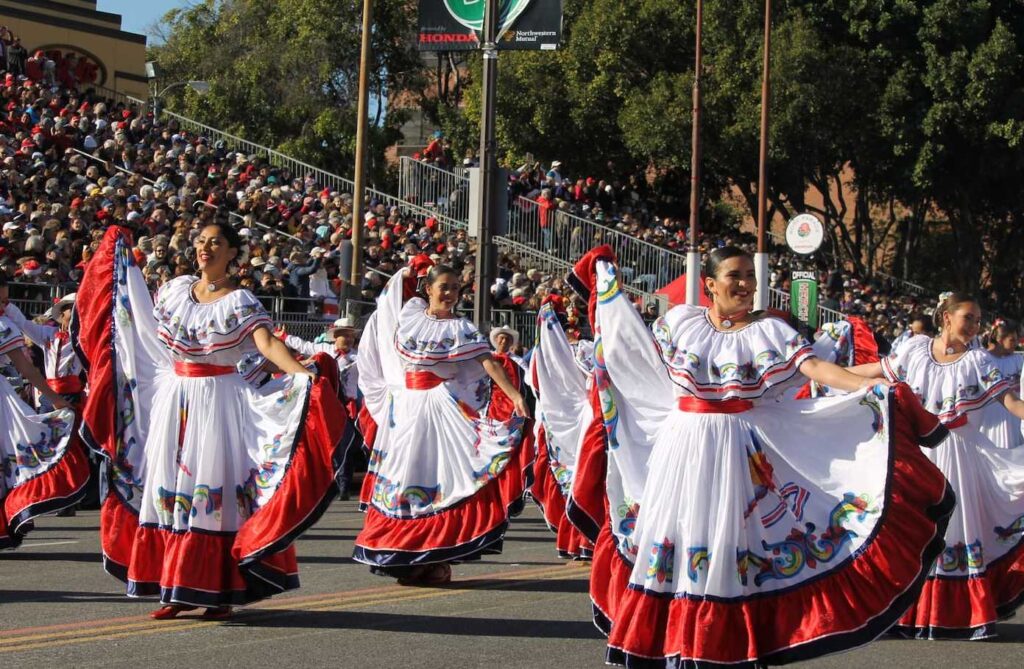
Why Is the Punto Guanacasteco the National Dance of Costa Rica?
The Punto Guanacasteco is Costa Rica’s most famous dance and an icon of national pride.
- Origin: Developed in the province of Guanacaste, known for its cowboy (sabanero) culture.
- Style: A lively courtship dance where men stomp and spin while women swirl their skirts, often teasing and evading their partners before ending in a symbolic kiss.
- Costumes:
- Men: white shirt and trousers, red scarf, straw hat.
- Women: full, multicolored skirts with ribbons, lace blouses, hair adorned with flowers.
- Music: Always performed with marimba, often accompanied by guitar, violin, and singers.
- Where to see it:
- July 25 – Annexation of Nicoya Festival in Guanacaste.
- January – Santa Cruz Fiestas Típicas Nacionales.
- September 15 – Independence Day parades across the country.
- Cultural shows at San José’s Teatro Nacional or community cultural centers.
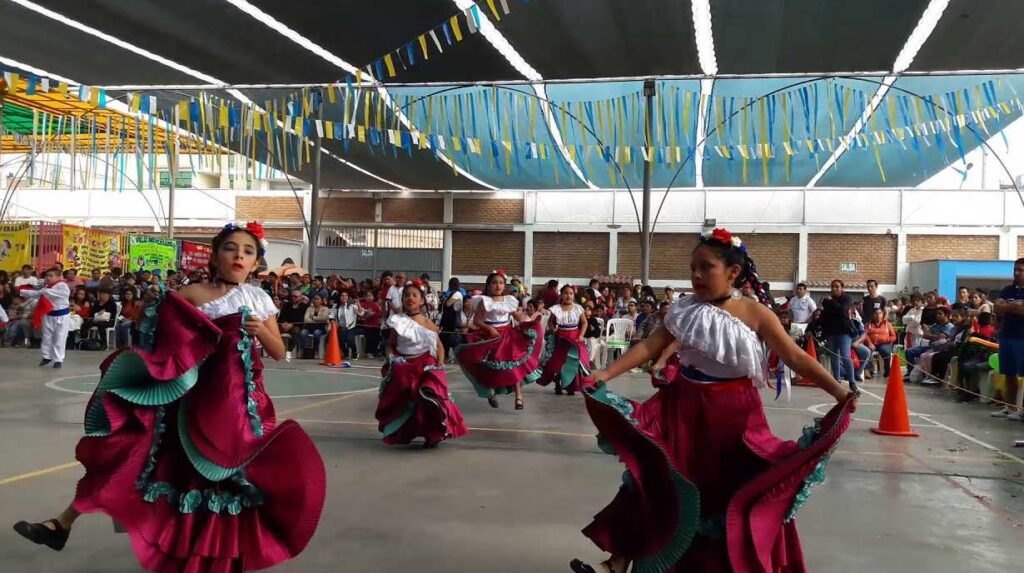
What Is the Tambito Dance?
Known for its syncopated steps, the Tambito is another lively Guanacaste tradition.
- Style: Faster and more playful than Punto, with energetic stomping and turns.
- Music: Marimba and ocarina (a traditional clay flute) dominate.
- Occasions: Performed during local fiestas patronales and rodeo-style celebrations.
What Story Does La Yegüita Represent?
The La Yegüita dance is unique to Nicoya in Guanacaste.
- Legend: Two brothers were about to fight to the death when a miraculous mare appeared to separate them.
- Performance: A dancer wears a horse framework costume, accompanied by another carrying a doll. Together they dance through the streets.
- Occasion: Celebrated every December 12 during the Virgin of Guadalupe festival in Nicoya.
- Symbolism: A dance of reconciliation and peace.
What Is Swing Criollo (Costa Rican Swing)?
Costa Rica also created its own modern dance.
- Origin: Developed in the 1940s, inspired by U.S. swing but adapted to Latin rhythms.
- Style: Couples perform spins, stomps, and playful improvisations.
- Music: Cumbia and Latin jazz rhythms.
- Status: Declared intangible cultural heritage in 2011.
- Where to see it: Nightclubs and cultural festivals in San José, or even at weddings and family gatherings.
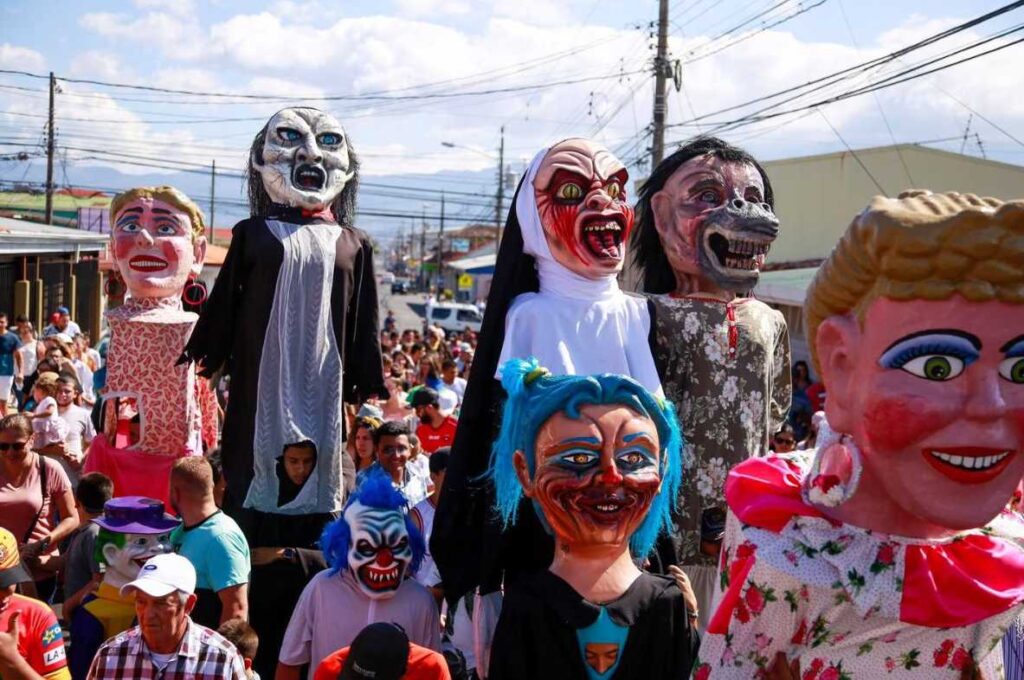
What Are Cimarronas and Mascaradas?
If you hear loud brass music and see giant papier-mâché heads dancing in the street, you’ve found a cimarrona parade.
- Cimarrona: A local marching band of trumpets, trombones, and drums.
- Mascaradas: Dancers wearing oversized masks of devils, animals, or political figures.
- When: Common during town fiestas, religious processions, and San José’s Día de la Mascarada (Oct 31).
- Tourist tip: Great photo opportunity — these parades are colorful, loud, and full of energy!
Where Can Tourists See Folk Dances in Costa Rica?
Here’s a quick guide to the best festivals and dates:
| Festival/Event | Location | Date | Main Dances |
|---|---|---|---|
| Festival de los Diablitos | Boruca, Puntarenas | Dec 30 – Jan 2 | Danza de los Diablitos |
| Fiestas Típicas Nacionales | Santa Cruz, Guanacaste | Mid-January | Punto, Tambito, Cimarronas |
| Annexation of Nicoya Day | Guanacaste towns | July 25 | Punto Guanacasteco, Tambito |
| Virgin of Guadalupe Festival | Nicoya | Dec 12 | La Yegüita |
| Independence Day | Nationwide | Sept 15 | School & community folk dances |
| Día de la Mascarada | San José | Oct 31 | Cimarronas, Mascaradas |
👉 Tip: Even outside major festivals, many hotels, cultural centers, and folkloric ballet groups (like Ballet Folklórico de Costa Rica) organize regular performances for visitors.
What Do the Costumes and Music Represent?
- Women’s costumes: Multilayered skirts with ribbons symbolize festivity, movement, and femininity.
- Men’s costumes: White linen clothing with a red scarf reflects Guanacaste’s cowboy heritage.
- Indigenous costumes: Boruca devil masks represent spiritual protectors; La Yegüita horse is a symbol of peace.
- Music:
- Marimba: Costa Rica’s national instrument, central to Guanacaste dances.
- Ocarina and flute: Add indigenous tones.
- Guitars and violins: Spanish colonial heritage.
- Cimarronas: Brass and percussion for parades.
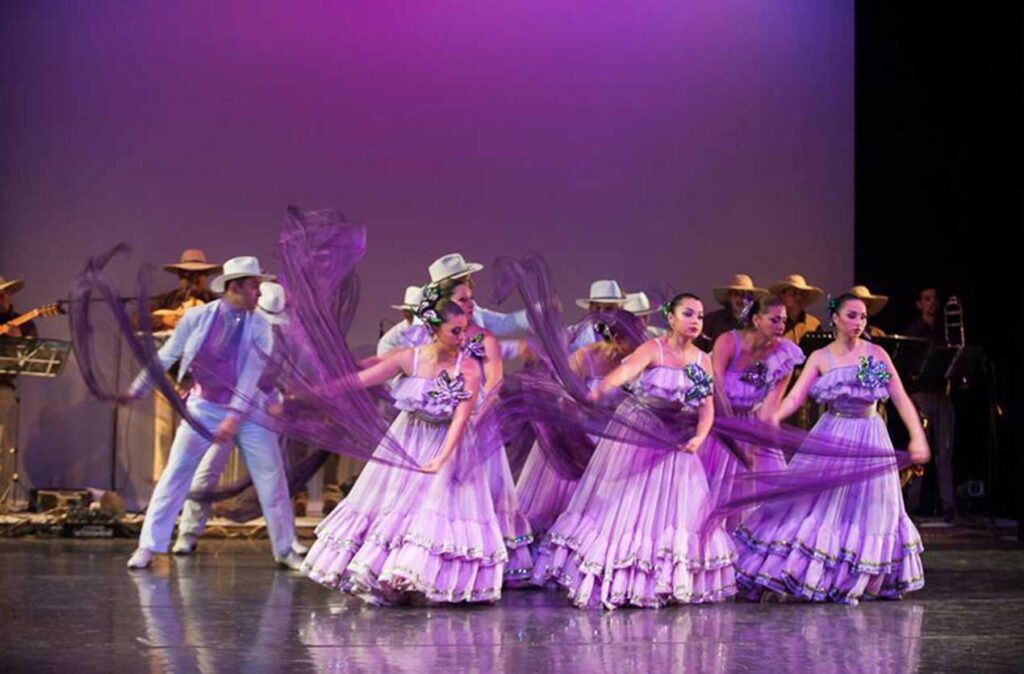
FAQs About Costa Rica’s Folk Dances
What is the national dance of Costa Rica?
The Punto Guanacasteco.
What instruments are most common?
Marimba, guitar, violin, ocarina, and cimarrona bands.
How old is the Danza de los Diablitos?
Centuries old, tracing back to Boruca pre-Columbian traditions.
Can tourists participate?
Yes! Locals often invite visitors to join in basic steps, especially at fiestas patronales.
Where can I buy costumes or masks?
Boruca masks are sold in indigenous markets; skirts and folkloric costumes are available in artisan shops in San José and Guanacaste.
Dance Into Costa Rica’s Culture
Costa Rica’s Traditional dances are windows into the soul of the nation — stories of resistance, romance, celebration, and community. By watching (or even joining) a performance, you connect with centuries of tradition that remain alive today.
✨ If you’re planning a trip to Costa Rica, check the local festival calendar and make time to see a live folk dance. It’s pura vida in motion — colorful, joyful, and unforgettable.
